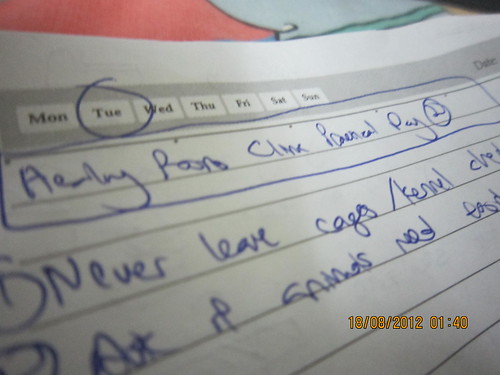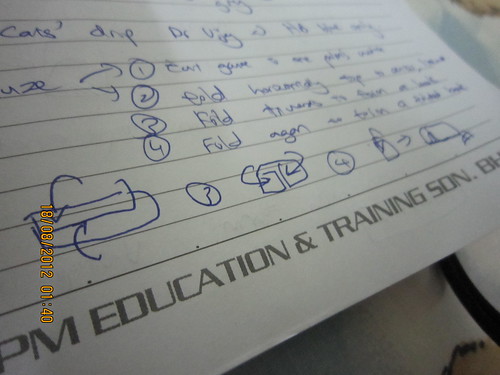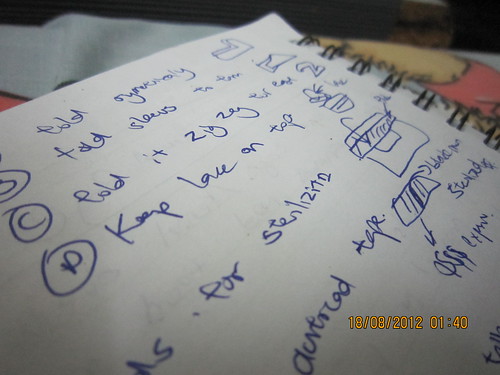The 2nd day was pretty much similar in the morning working around the clinic. I was a lil late so the dogs were all walked by Christine.
However, before we proceeded Dr Prem kinda sounded us a lil because of the condition we left the kennels the night before. Cristine had to leave 5pm sharp everyday so she kinda left everything else to me. But me being the first year and first day in the practical, I wouldn't know what and how to handle things around.
Apparently there are a few thing we missed:
1- The kennels checked out the night before were unattended. The fur were laying around, and was cleaned appropriately.
2- The Basset Hound was left without any water for one whole night. For a dog of its age and size(around 20kg) we can easily thirst the poor dog to death. Although the dog was the type who barks a lot, we still need to take precaution and check on it if it needs anything.
Clinical husbandry:
1- While force feeding, animals should be lifted by their necks up high, and massaged their necks to ease the food forced down their throat.
2- Restraining of animals should be done using the dominant hand, pulling the animals closer to the restrainer's body so as the animal wouldn't struggle profusely.
3-Reduce the rate of sedation as minimum as possible, and only when its absolutely required. Ie: Abnormally aggressive animals.
4- While sedation takes place, veins of animals should be located as soon as possible to speed up every clinical aspects subsequently.
5- For blood sent to labs for analysis, in HR's case Gribbles, there are 3 tabs, 1 red, 1 yellow, 1 grey, Red for plain, Yellow for gel and Grey for Fluoride Oxalate, each for blood biochemistry test.
6- Preparation of gauze: In normal clinic setting, the purchase of ready made gauze is not feasible due to economical purposes. A packet of ready made gauze of 60 costs RM10, while a roll of 10m gauze which can make up to 3000 gauze only costs RM5. A vast difference, and since there are times which gauze can be made manually by the staffs in the clinic, the latter is much preferable. The typical gauze making process is as follow:
a) Cut the gauze to one palm's width, preferably of normal palm size instead of extremities.b) Fold the top and bottom of the gauze at the horizon to the enter to make a rectangle.
c) Fold the sides inwards to form a book-shaped cotton.
d) Fold the cotton again into half.
Surgical Husbandry:
1- Folding of surgical gowns: Gowns are the most important wear in the surgical theater, in which full sterility protects the animals being operated from the bacteria or viruses available from the scrubs of the surgeon. In order to allow the surgeon to unfold the gown with minimal contact prior to the surgical procedure, proper folding ways are being practiced by the vet assistants to prepare the surgical gowns.
a) Fold the gown from left to right symmetrically.b) Fold the sleeves to form a parallelogram.
c) Fold the gown zig-zagly to form a square, so as the gown unfolds with just a flick by holding the strings on the chest area of the gown.
d) Keep lace on top of folded gown.
e) Wrap the folded gown in a green square linen tightly, sticking with the autocated tape with bands.
f) Fold the square linen inside out with a zig-zag, so as the underneath of the linen can be held by surgery assistants to unfold the linen to expose the gown without contaminating the upper surface.
g) When the tape on the linen is banded with dark black bands, it means the linen is sufficiently sterilized. Otherwise with light bands, vice versa.
2- Ectopic pregnancy: Pregnancy occuring outside of the uterus ie intestine, stomach etc
3- Hypertrophic-cardiomyopathy: Thickened cardiac muscles in the left ventrical wall of the heart.
4- End arteries found around animals' ears are best areas to extract blood in order to trace certain parasites via PBF(Peripheral Blood Film).
5- To prepare PBF slides:
a) Drop blood taken on the slide, thence use the cover slip to form a 30 degrees angle.b) Slide the slit away from the blood stain to form a bullet-shaped blood spread.
c) Stain the slit with H & E(hemotoxylin and eosin) to form a purple stained slide.
d) Dry then observe.
e) Keep slide away from disturbance which might cause errors in readings.
6- Pancrease can be found in a U-shaped region rounded by the small intestine in every animals.
7- While shaving animals with razors, have short cuts instead of long lengthy drags to improve the efficiency.
We had a few spays today, actually a lot of spays. But spays are really normal cases. It happens everyday. Today an exciting one was the male dog castration. It was a German Shepard mix. I said it was a mix because it didn't have ALL traits of one, and its build was a lil different.Nevertheless, equally huge. 25kg that was, and carrying this boy up the staircase into the theater was no joke. The interesting ones would be clinical appointments where the doctor actually allows me to sit in and observe how he deals with the clients.
Dr VJ is a really passionate vet, its in his blood. He gives thoughts which allows the owners to think in different perspectives and angles so as they are able to make choices best for their animals under their roofs. He too, encourages me to ask questions all, even if it makes you stupid.
Why? Because it might make you stupid on one that very moment, but smart for the rest of your life. Otherwise, you remain stupid forever.
The clients are very comfortable around Dr VJ, as he talks to them in a friendly manner. Unlike previous vets whom I had experiences with. The ones I dealt with were quite cold and practically just there for the money as well as solving the immediate problem. Dr VJ takes time to go through all aspects so he can reduce as many mistakes and details which are left out as possible in treating the animals.
The day ended with a round of walk with the dogs, as well as stained dog's blood on my T-shirt. However, it was indeed a great day.




No comments:
Post a Comment